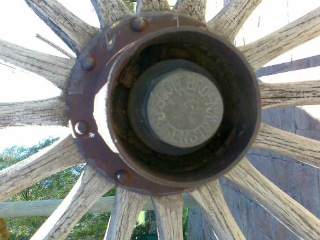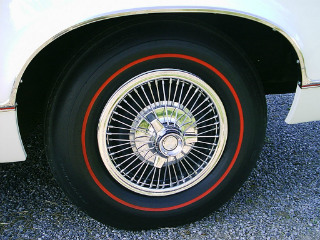When we purchase a car, there are always the extras we choose to splurge on to make our car just a little bit more “ours”. Seat covers, shifters, audio systems, window tint and metal finishes. Modern car enthusiasts can find a way to alter just about anything on their car…
A Brief History of the Hubcap

How long ago would you guess that the hubcap was invented? Fifty years? A hundred? You might be very surprised to learn that the first Hubcap was used in the late 17th century on the Newton Reaction Carriage. Early hubcaps were usually referred to as grease or dirt caps, as their primary function was to prevent dirt and grease from affecting wheel hardware. The early caps were threaded directly to the center hub on the wheel, which back then were made of wood, steel or wire. Even earlier than that (before 1915) hubcaps were made of a brass with a nickel-plating for aesthetic purposes. Auto manufacturers would move on to aluminum hubcaps in the early 1920s.
The center cap originated from wheel retailers adding a branded stamp the make of the vehicle at the center of the wheels. By the early 1930s, practically every car featured a snap on center cap in the middle of the wheel. Spring loaded retention systems invented back then have gone largely unchanged even today.
Center caps served several purposes, one of which was to prevent debris from entering and obstructing any wheel hardware from working correctly. Then auto manufacturers started wondering if there could be an advantage to expanding the center cap to cover more of the wheel. The now defunct Cord Automobile and Hudson Motor Car Company were some of the quickest to implement this idea. Cord designed a smooth wheel cover with holes drilled into its sides. Hudson’s wheel cover was flat and featured a lip halfway through between the center of the wheel and the outer edge.

By the time the pressed steel wheel became commonplace, these would typically be painted to match the car body. As such, hubcaps were expanded to hide the lug nuts that mounted the wheels to the car. Some car manufacturers would offer an optional chrome ring that clipped to the outer rim of the wheel. This option was wildly popular and would evolve in to the hubcap of today that covers the entire wheel. As they evolved, so did the public’s craving for more decoratively styled hubcaps that not only protected the wheel but looked cool.
Entry level cars started to issue standard and visually boring hubcaps called “dog dish caps” due to resembling a dog dish. They were also referred to as “poverty caps” , mocking their cheap price. At the same time, car manufacturers were issuing full wheel covers with visually appealing designs standard on higher end models. Starting in the 1960s and continuing on until the early 1980s, manufacturers began offered stainless steel wheel covers made to resemble the old, and more expensive wire spoke wheels of the past.
These days, metal has been replaced in the hubcap industry. Modern automobiles use plastic hubcaps that cover the entire wheel, while the higher end and performance models typically pony up a bit and offer aluminum alloy wheels with fancy centercaps.
Do you have any pictures of OEM wheels or vintage hubcaps? We’d love to see them! Contact us to send over any cool pictures, facts or anything else you’d like to share. We love discussing anything remotely wheel related with our customers.







